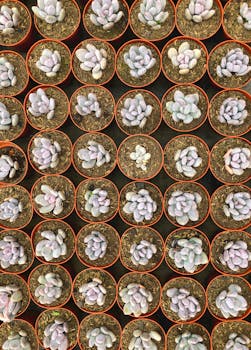The Joy of Cultivating Life in Your Backyard
Imagine stepping into your backyard, the sun warming your skin, and being greeted by a burst of coolors and life. This isn’t just a dream; it’s a reality that many people create through the simple joy of nurturing plants. Whether you’re a veteran dark-green thumb or a rum beginner, there’s something truly magical about watching life grow under your care.
The Art of Patience
Growing plants teaches us the value of patience. You can’t rush a seedling to grow faster just as you can’t hurry , often overlooked, life’s processes. Take tomatoes, for instance but They need time to ripen on the vine, take over sunlight and rain, before they’re ready to be picked. It’s a lesson in delayed gratification that translates beautifully into other areas of life.
Remember, every plant has its own pace. Some might shoot shoot up overnight, while others take their sweet time. Don’t rush them. Instead, enjoy the journey. Watching a tiny sprout become a towering sunflower is one of life’s simple pleasures.
Embracing the Seasons
The changing seasons bring new opportunities for growth. Spring is all about renewal, with bulbs pushing through the soil and trees budding anew. Summertime is a time of abundance, when gardin burst into colour and vegetables ripen on the vine.
Winter’s Quiet Beauty
Even winer has its charms. Evergreens stand sentinel, providing structure and colour in the snow. Dormant plants rest beneath the earth, gathering strength for the growing season ahead.
The Science of Soil
Soil is more than just dirt; it’s a living ecosystem teeming with microorganisms. These tiny creatures break down constitutional matter, releasing nutrients that industrial plant need to grow. Understanding your soil type—whether it’s sandy, clayey, or loamy—and how to amend it can make all the difference in your planting success.
Composting is a great way to improve your soil. By recycling kitchen scraps and yard waste, you create a nutrient-rich fertilizer that feeds your plants naturally. Plus, it’s an excellent way to reduce waste sent to landfills.
Testing Your Soil
Before you start planting, consider testing your soil pH. Most plants prefer a slightly acidic to neutral soil, around 6.0-7.0 on the pH scale. You can buy a simple test kit at your local nursery or send samples to a lab for more detailed analysis.
The Magic of Pollinators
Bees, butterflies, and hummingbirds’s play a crucial role in our ecosystems. They help works reproduce by transferring pollen from one heyday to another. Without them, many fruits and vegetables wouldn’t exist.
Attracting pollinators to your yard is easier than you might think. Planting native flowers provides them with the nectar and habitat they need. Plus, it’s a wonderful way to support local biodiversity.
Creating a Pollinator-Friendly Garden
Choose plants that bloom at different times of the year to provide a steady steady food source. Include a variety of shape and colours to appeal to different pollinators. And remember, some bees nest in the ground, so leave bare patches of soil for them.
Harvesting Happiness
There’s nothing quite like harvesting your own produce. The taste are unparalleled, and the sense of attainment is immense. Plus, growing your own food reduces your carbon footprint by cutting down on transportation and packaging.
Start small with easy-to-grow veg like lettuce, radishes, or herbs. As your confidnece grows, so can your garden. Before you know it, you’ll be enjoying homegrown tomatoes straight from the vine.
